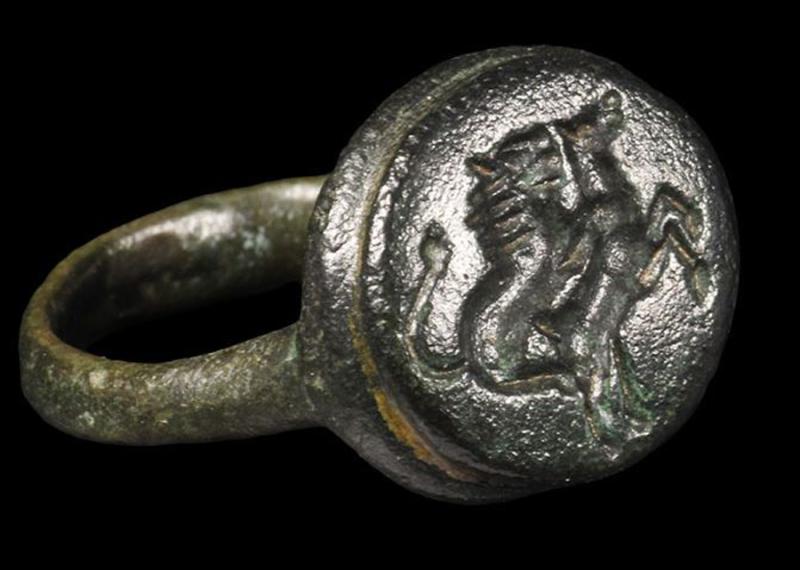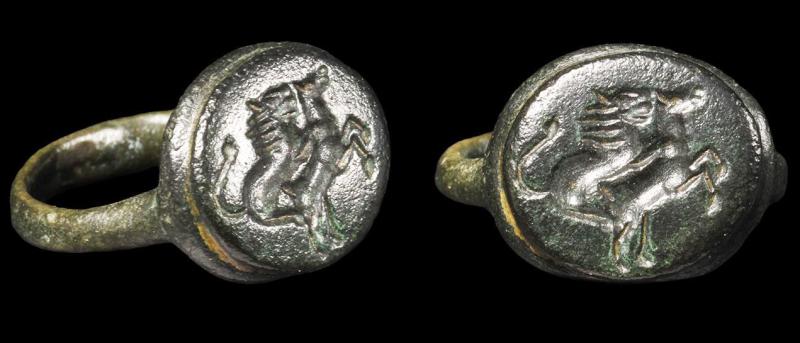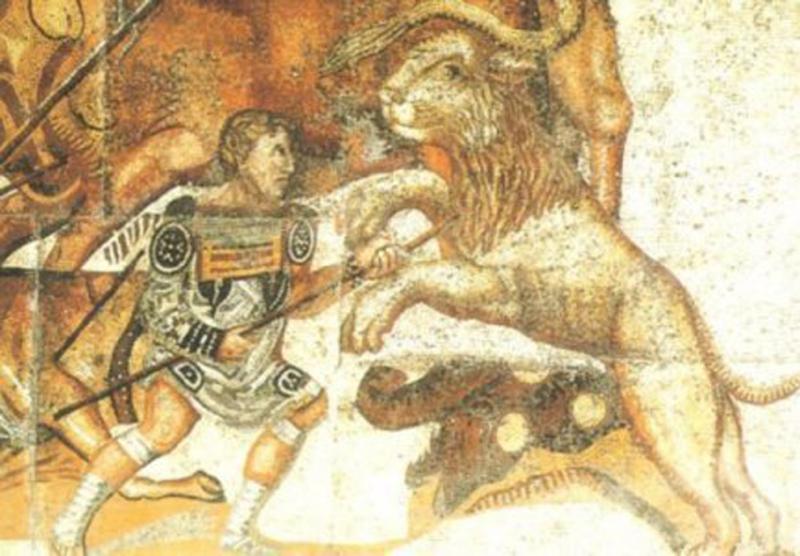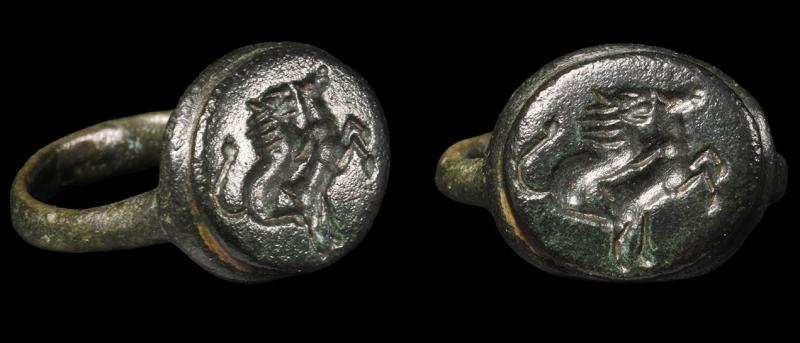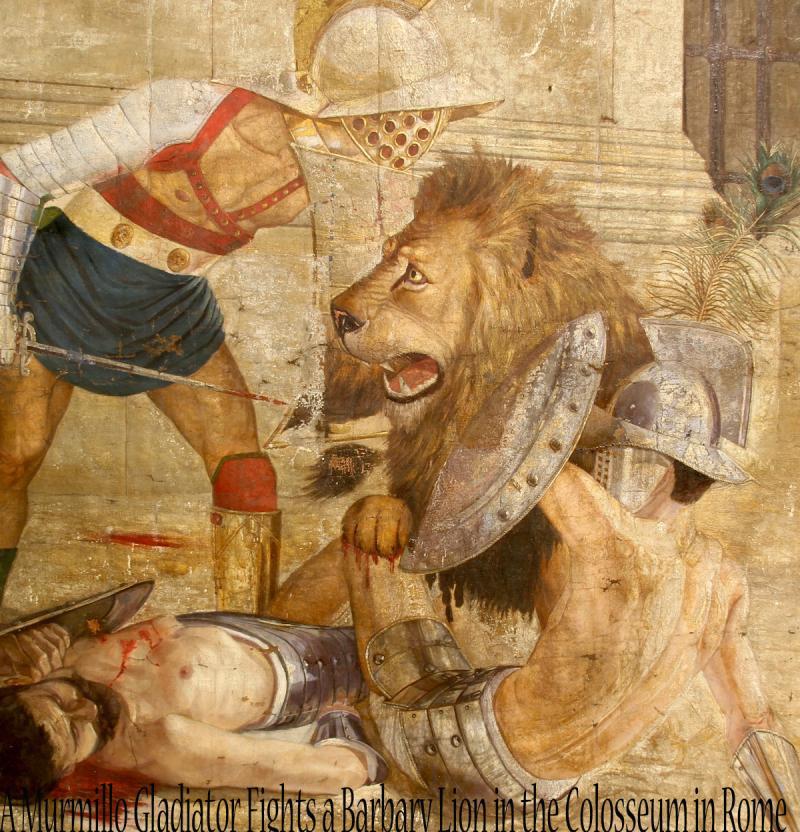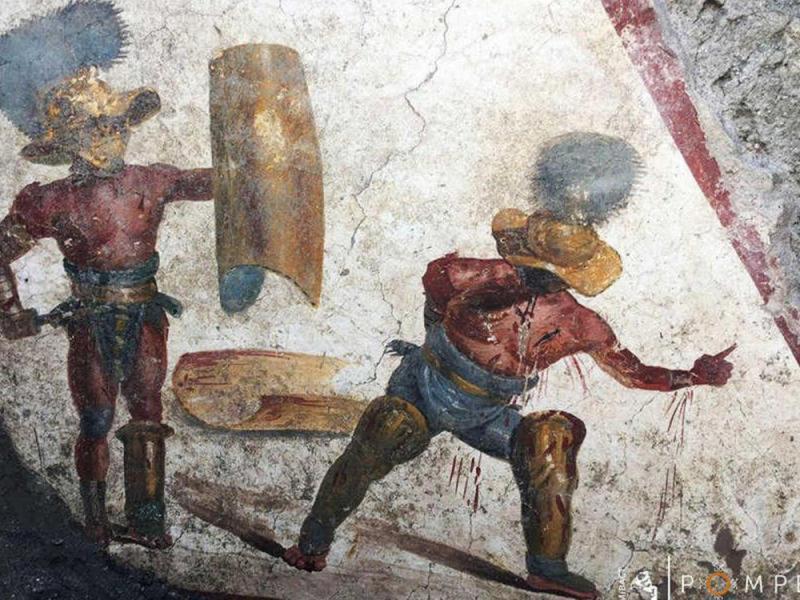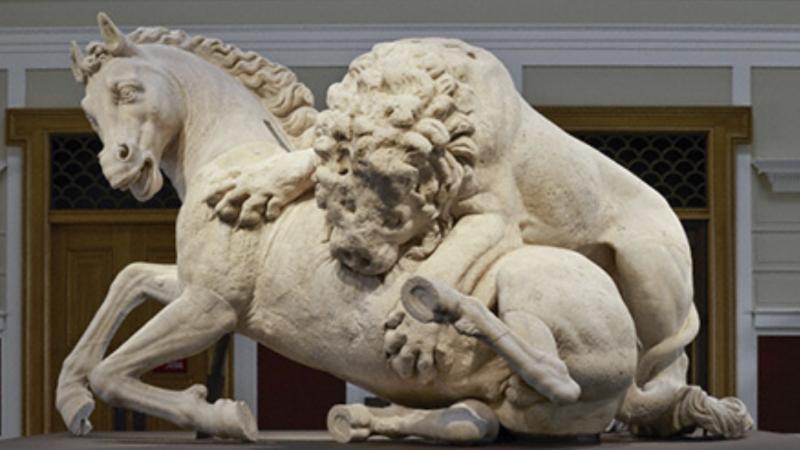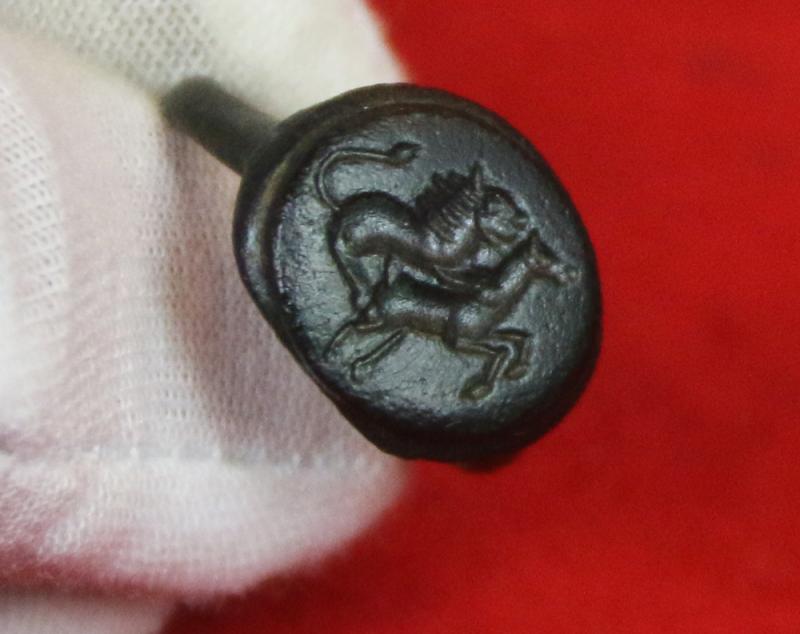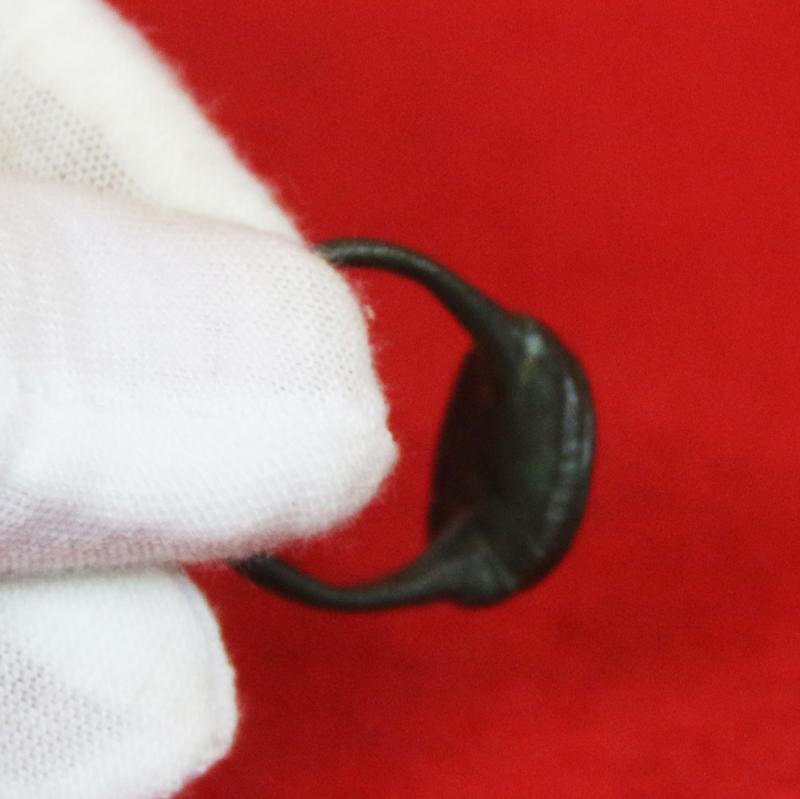A Fabulous & Rare Original Imperial Roman Gladiator's Bronze Ring, Featuring A ‘Coliseum' Barbary Lion Fighting a Stallion Around 1700 Years Old & In Superb Condition
Featuring an amazingly detailed intaglio hand engraving of a Barbary lion, upon the back of a stallion, in a gladiatorial arena combat pose, from such as the gladiator's arena in the Colosseum in Rome, from the time of the Emperor's Marcus Aurelias and Commodus until emperor Constantine.
Acquired with another gladiator's ring, with a reined horse, from a collector, {now sold}
The era superbly depicted in Sir Ridley Scott's blockbuster movie, Gladiator, starring Russell Crowe, up to the era of emperor Constantine the Great.
In copper bronze with great, natural age patination. By far the greatest percentage of rings from the Roman era were engraved in the stylised form, but a very small percent, perhaps less that .01 of a percent, were engraved in the realism form. This is one of those rare types of more realistic engravings. Worn either by a higher ranking, possibly freed gladiator, or, possibly an owner of gladiators, as played by Oliver Reed in the Gladiator movie the world famous combat slaves of Rome.
The wearing of the ring was the prerogative alone of Roman citizens or those of high rank and esteem, that some gladiators always aspired to but rarely achieved due to their short life span within their violent craft. However some did achieve such great success and were rewarded with riches, freedom and the right to wear the traditional Roman bronze status ring.
Another picture in the gallery is of a well-preserved fresco, recently unearthed in Pompeii—the Roman city razed by Mount Vesuvius’ eruption in 79 A.D.—it depicts the final act of a gladiator fight: As one combatant begs for mercy, the victorious warrior awaits instructions on whether to kill or spare his opponent.
A gladiator was an armed combatant who entertained audiences in the Roman Republic and Roman Empire in violent confrontations with other gladiators, wild animals, and condemned criminals. Some gladiators were volunteers who risked their lives and their legal and social standing by appearing in the arena. Most were despised as slaves, schooled under harsh conditions, socially marginalised, and segregated even in death. However, success in the arena could mean riches and fame beyond their wildest dream. For many this was the greatest escape from slavery there was.
Irrespective of their origin, gladiators offered spectators an example of Rome's martial ethics and, in fighting or dying well, they could inspire admiration and popular acclaim. They were celebrated in high and low art, and their value as entertainers was commemorated in precious and commonplace objects throughout the Roman world.
The origin of gladiatorial combat is open to debate. There is evidence of it in funeral rites during the Punic Wars of the 3rd century BC, and thereafter it rapidly became an essential feature of politics and social life in the Roman world. Its popularity led to its use in ever more lavish and costly games.
The gladiator games lasted for nearly a thousand years, reaching their peak between the 1st century BC and the 2nd century AD the time of Emperor Commodus. Christians disapproved of the games because they involved idolatrous pagan rituals, and the popularity of gladiatorial contests declined in the fifth century, leading to their disappearance.
Marcus Aurelius acceded to the throne alongside his adoptive brother, who reigned under the name Lucius Verus. Under his rule the Roman Empire witnessed heavy military conflict. In the East, the Romans fought successfully with a revitalized Parthian Empire and the rebel Kingdom of Armenia. Marcus defeated the Marcomanni, Quadi, and Sarmatian Iazyges in the Marcomannic Wars; however, these and other Germanic peoples began to represent a troubling reality for the Empire.
Commodus was the Roman emperor who ruled from 177 to 192. He served jointly with his father Marcus Aurelius from 177 until the latter's death in 180, and thereafter he reigned alone until his assassination. His reign is commonly thought of as marking the end of a golden period of peace in the history of the Roman Empire, known as the Pax Romana.
Commodus became the youngest emperor and consul up to that point, at the age of 16. During his solo reign, the Roman Empire enjoyed reduced military conflict compared with the reign of Marcus Aurelius. Intrigues and conspiracies abounded, leading Commodus to revert to an increasingly dictatorial style of leadership, culminating in his creating a deific personality cult, with his performing as a gladiator in the Colosseum. Throughout his reign, Commodus entrusted the management of affairs to his palace chamberlain and praetorian prefects, named Saoterus, Perennis and Cleander.
Commodus's assassination in 192, by a wrestler in the bath, marked the end of the Nerva–Antonine dynasty. He was succeeded by Pertinax, the first emperor in the tumultuous Year of the Five Emperors.
Not only did the ‘games’ centre on gladiators, they also included animals fighting other animals, such as bears fighting lions or lions vs horses. Since ancient times horses have been trained for combat, not just to be non-fearful in carrying its rider into the melee of hand to hand combat, but to kill any adversary, albeit a man or another animal.
Just around 0.75 inch across. A sound piece in a wearable size
As with all our items it comes complete with our certificate of authenticity
Code: 24792

